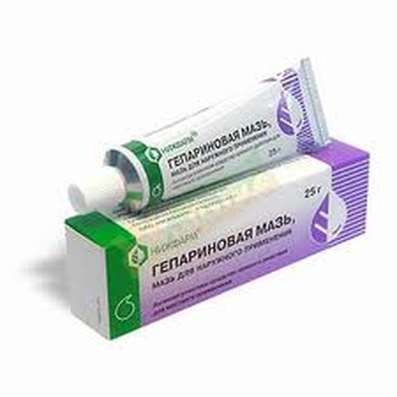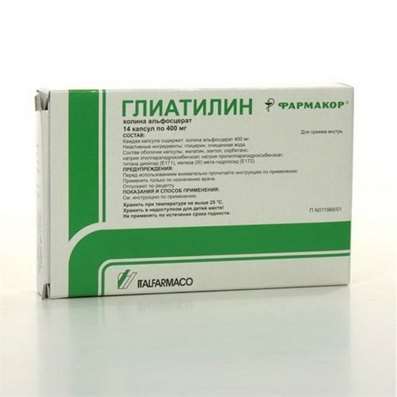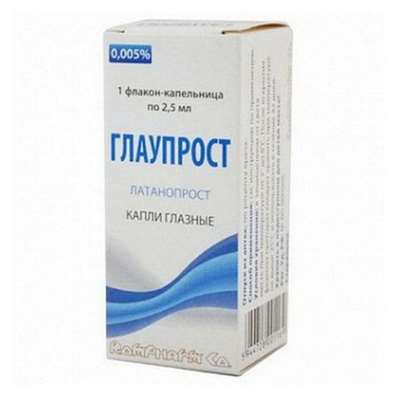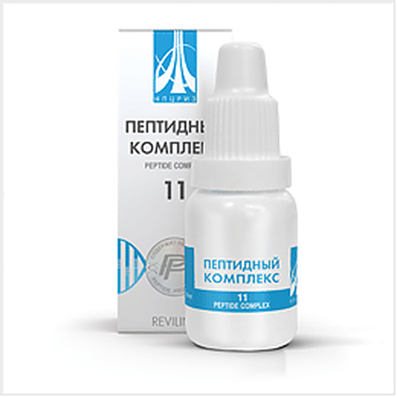Instruction for use: Atomoxetine (Atomoxetinum)
I want this, give me price
Trade name of the drug – Atomoxetine
Chemical rational name: (-) - (3R) -N-Methyl-3- (2-methylphenoxy) -3-phenyl-propan-1-amine (as hydrochloride)
Compositionactive substance:
Atomoxetine hydrochloride is a white solid having a molecular weight - 291.82, solubility in water - 27.8 mg / ml.
Pharmacotherapeutic group: Sympathomimetic drug
CodeCAS 82248-59-7
Pregnancy and breast-feeding
Category effects on the fetus by FDA - C.
Pharmacological Properties of AtomoxetinePharmachologic effect
Highly selective potent inhibitor of noradrenaline presynaptic transporters with minimal affinity for others. Noradrenergic receptors, as well as others. Neurotransmitter receptors. It does not apply to psychostimulants and is not derived from amphetamine. Syndrome "cancellation" is not marked.
Pharmacokinetics
Quickly and almost completely absorbed after oral administration. TCmax -. 1-2 hours well distributed in the body. Communication with proteins - high (especially albumin). It is metabolized in the liver involving the cytochrome CYP2D6. The main image is oxidized metabolite 4-gidroksiatomoksetin glyukuroniruetsya quickly. By pharmacological activity equivalent atomoxetine but circulates in plasma at much lower concentrations. People with inadequate CYP2D6 activity gidroksiatomoksetin 4 can be formed using other. Cytochrome P450 isoenzymes, but more slowly. T1 / 2 - 3.6 hours in patients with high metabolic intensity and 21 hours - with reduced. Excreted mainly in urine in the form of 4-O-gidroksiatomoksetin glyukuronida.Farmakokinetika in children and adolescents with similar pharmacokinetics in adults.
Indications for Atomoxetine
Attention Deficit Hyperactivity Disorder.
Contraindications for Atomoxetine
Hypersensitivity, angle-closure glaucoma, simultaneous MAO inhibitors, lactation, children's age (up to 6 years).
Precautions: Hypertension, tachycardia, stroke, hypotension, and the disease, its cause, and pregnancy.
Atomoxetine Dosage and Administration
Inside, regardless of meals (or during meals), 1 time per day in the morning or in the event of side effects - 2 times a day (morning and late afternoon or early evening).
Children and adolescents with a body weight up to 70 kg: the recommended initial daily dose - 0.5 mg / kg, which was increased to 1.2 mg / kg, not earlier than 3 days. If there is no improvement of the daily dose can be increased to a maximum of - 1.8 mg / kg (or 120 mg) is not earlier than 2-4 weeks after initiation of treatment.
The recommended maintenance dose - 1.2 mg / kg / day.
Children and adolescents weighing over 70 kg and adults: The recommended initial daily dose - 40 mg, which was increased to 80 mg not earlier than 3 days. If there is no improvement of the daily dose can be increased to a maximum of - 120 mg is not earlier than 2-4 weeks after initiation of treatment. The recommended maintenance dose - 80 mg.
In patients with moderate hepatic impairment (class B classification Child-Pugh) starting and maintenance dose is reduced by 50%. In patients with severely impaired hepatic function (class C Child-Pugh classification) starting and maintenance dose is reduced to 25% of the usual dose.
Side effect of Atomoxetine
Very often (10%), frequent (10.1%), often not (0.1-1%).
Children and adolescents: the most common - abdominal pain, decreased appetite (18% and 16%, respectively).
In connection with the reduction of appetite reduction in body weight was observed at the beginning of treatment an average of 0.5 kg (weight loss increased at higher doses). After the initial weight loss, it showed a slight increase in body mass during prolonged therapy. Development Indicators (weight and height) after 2 years of treatment are close to normal. There were nausea and vomiting (9% and 11% respectively), especially during the first month of treatment, increased heart rate 6 / min, systolic and diastolic blood pressure of 2 mmHg
From the nervous system: often - dizziness, drowsiness, early morning awakening, irritability, emotional lability.
From the senses: common - mydriasis.
From the CCC: rarely - palpitations, sinus tachycardia.
From the digestive system: very often - abdominal pain, vomiting; often - indigestion (including constipation, nausea).
For the skin: often - dermatitis, pruritus, rash.
On the part of metabolism: often - loss of appetite; often - anorexia, weight loss.
Allergic reactions: skin rash, angioedema, urticaria.
Other: often - fatigue, flu.
The following adverse events occurred in 2% of patients with low activity of Cytochrome CYP2D6 were 2 times or more statistically significantly more often in patients with reduced metabolism compared to patients with high activity CYP2D6: loss of appetite (24.1% and 17%, respectively) insomnia (10.5% and 6.8%, respectively), quality of sleep disturbance (3.8% and 1.5%, respectively), enuresis (3% and 1.2%, respectively), low mood (3% and 1 %, respectively), tremor (5.1% and 1.1%, respectively), early morning awakening (3% and 1.1%, respectively), conjunctivitis (3% and 1.5%, respectively), syncope (2.1% and 0.7%, respectively), mydriasis (2.5% and 0.7% respectively). In adults: increase in heart rate of 6 / min, systolic blood pressure by 3 mm Hg diastolic and 1 mm Hg .; orthostatic hypotension (0.2%), syncope (0.8%).
From the nervous system: very often - insomnia; often - dizziness, sleep quality violation, headache, early morning awakening, decreased libido, insomnia, drowsiness, weakness.
From the CCC: often - "tides" of blood, palpitation, tachycardia; not often - cold sensation in the lower extremities.
From the digestive system: very often - dry mouth, nausea; often - abdominal pain, dyspepsia (including constipation, flatulence).
On the part of metabolism: often - loss of appetite; often - reduction of body weight.
For the skin: often - dermatitis, increased sweating.
With the genitourinary system: often - difficulty urinating, urinary retention, dysmenorrhea, abnormal ejaculation and erection, orgasm disturbance, prostatitis.
Allergic reactions: skin rash, angioedema, urticaria.
Overdose of Atomoxetine
Symptoms: drowsiness, agitation, hyperactivity, conduct disorder, disturbance of gastrointestinal function, mydriasis, tachycardia, dry mouth, seizures. Reported cases of acute overdose with fatal outcome while taking atomoxetine in combination with others. PM.
Treatment: gastric lavage, activated charcoal, monitoring heart activity and vital signs, ventilator, symptomatic and supportive therapy. Dialysis is not effective.
Interaction
Atomoxetine should not be used for at least 2 weeks after discontinuation of MAO inhibitors. MAO inhibitors treatment should start within 2 weeks after the cancellation of atomoxetine.
Beta2-adrenostimulyatorov - the risk of side effects from the CCC (increased heart rate and blood pressure).
It does not cause clinically significant inhibition or induction of cytochrome P450 isoenzymes, including SYP1A2, CYP3A, CYP2D6, and CYP2C9.
Patients with severe metabolic CYP2D6 inhibitors CYP2D6 Atomoxetine increase the concentration in plasma to a level similar to that of patients with reduced metabolism of CYP2D6.
Vasoconstrictive drugs - risk of increased blood pressure.
Drugs that increase the pH of gastric juice (hydrochloride magnesium / aluminum hydroxide, omeprazole) does not affect the bioavailability of Atomoxetine.
Drugs that affect the secretion of norepinephrine - may increase or synergistic effect.
Atomoxetine does not affect the protein binding of warfarin, ASA, phenytoin and diazepam.
SPECIAL INSTRUCTIONS for Atomoxetine
Treatment should be under the supervision of a doctor who has experience of working with patients with a syndrome of concentration of attention deficit hyperactivity disorder.
Cancel the drug does not require a gradual reduction of the dose.
Against the background of the drug in clinical trials in children and adolescents increases the risk of suicidal thoughts. During these clinical studies reported a suicide attempt; completed suicide was not.
Many patients during treatment showed an increase in heart rate (less than 10 / min) and / or increase in blood pressure (less than 5 mmHg), which in most cases had no clinical significance.
Cases of orthostatic hypotension have been reported, therefore caution should be exercised when administering the drug for conditions and diseases, leading to hypotension.
In the case of jaundice or laboratory test abnormality, indicative of abnormal liver function, treatment of atomoxetine should be abolished. Rarely, hepatotoxicity manifested by increased activity of "liver" enzymes, hyperbilirubinemia and jaundice.
Efficacy and safety in children under 6 years of age and in elderly patients has not been established. The effectiveness of treatment for over 1.5 years, as well as safety for the duration of therapy more than 2 years has not been studied.
In children and adolescents weighing more than 70 kg and safety in adults a single dose of 120 mg and the total daily dose of 150 mg has not been evaluated. In children and adolescents with a body weight up to 70 kg safety of single and total daily doses greater than 1.8 mg / kg is not known.
Aggressive behavior or hostility is often observed in children and adolescents with attention deficit hyperactivity disorder concentration. Communication aggressive behavior or hostility with taking Atomoxetine has not been established (they were observed in patients receiving the drug with no statistically significant differences when compared with the placebo group). During treatment, patients should be observed for signs of aggressive behavior or hostility.
During pregnancy, the drug is prescribed only if the potential benefit to the mother outweighs the potential risk to the fetus.
It is not known if atomoxetine is excreted in breast milk. It is necessary to refuse the appointment during breastfeeding.
The drug may be accompanied by sleepiness. In this regard, during the period of treatment should be taken when activities potentially hazardous activities that require high concentration and speed of psychomotor reactions (including driving).

 Cart
Cart





